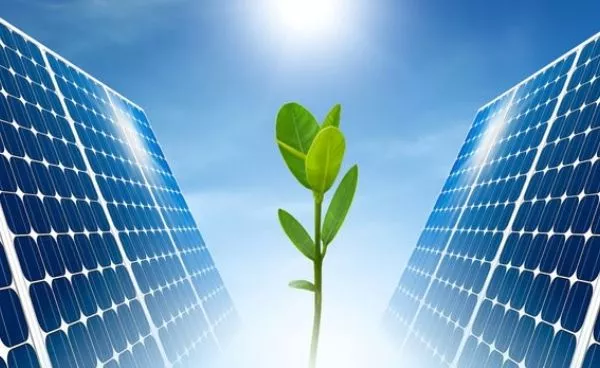Why Simply Solar Illinois is the Smart Choice for Renewable Energy
Why Simply Solar Illinois is the Smart Choice for Renewable Energy
Blog Article
Solar Power 101: A Novice's Guide to Sustainable Power Solutions
As the globe increasingly shifts towards lasting energy services, understanding the fundamentals of solar energy comes to be essential for both individuals and organizations. This guide gives a complete introduction of solar power, describing the numerous systems available and the devices behind their procedure. By exploring the benefits of solar innovation, along with the monetary motivations and installment procedures, one can obtain a clearer perspective on just how to efficiently integrate this renewable source right into their power approach. The journey towards adopting solar energy invites more exam of the challenges and considerations that come with it.
Understanding Solar Power
At its core, recognizing solar energy entails realizing the fundamental concepts of how sunlight can be transformed right into usable power. Solar power is derived from the sunlight's radiation, which can be used via various technologies.

Comprehending solar power additionally includes identifying its environmental benefits. By making use of sunlight, we can alleviate greenhouse gas exhausts and lower air pollution, adding to a more lasting future. The developments in modern technology and performance of planetary systems continue to enhance their feasibility, making solar power an increasingly eye-catching alternative for worldwide energy requirements.
Sorts Of Solar Power Systems
Different kinds of solar energy systems are typically employed to harness solar power for electrical power generation. The main groups include solar (PV) systems, focusing solar energy (CSP) systems, and solar thermal systems.
Photovoltaic or pv systems make use of solar panels composed of silicon cells that transform sunshine directly right into power. These systems are versatile and can be set up on roofs, ground mounts, or integrated right into building materials.
Concentrating Solar energy systems, on the other hand, use mirrors or lenses to concentrate sunshine onto a small area, creating heat that drives a steam generator to generate power - Simply Solar Illinois. CSP systems are typically deployed in massive power plants and call for direct sunlight, making them less suitable for cloudy areas

Each type of solar power system has its one-of-a-kind features, applications, and suitability relying on geographical area, power needs, and spending plan, making it necessary to examine options based on certain circumstances. - Simply Solar Illinois

Benefits of Solar Power
Utilizing solar power through different systems not just gives a lasting way to generate power but also offers a multitude of advantages. Among one of the most considerable advantages is the decrease in greenhouse gas exhausts, adding to a cleaner atmosphere and combating climate modification. Solar energy is renewable, indicating it is infinite and offered as long as the sunlight shines, unlike fossil fuels, which are finite and depleting.
Furthermore, solar energy can bring about substantial expense savings with time. Property owners and organizations can lower their electrical power bills substantially, and in lots of cases, they may gain credit ratings for excess energy created through net metering. Additionally, the solar industry produces work, from manufacturing to installment, promoting neighborhood economic situations.
One more engaging benefit is power independence. By producing their very own electricity, individuals and neighborhoods can reduce dependence on external energy sources, enhancing resilience against changing power costs and supply disturbances. Additionally, solar power systems call for minimal upkeep, making them a convenient choice for sustainable energy generation.
Installment Process Overview
The installment procedure for solar power systems generally involves several vital steps that make certain reliable assimilation right into a home. A detailed website assessment is conducted to examine the roofing's orientation, shading, and structural integrity, which are important to maximizing solar panel efficiency. Following this assessment, the design phase starts, where a tailored solar energy system is set up based on the property owner's power needs and preferences.
Once the layout is wrapped up, the necessary authorizations and authorizations are acquired from neighborhood authorities, ensuring conformity with guidelines. The actual installment includes installing the photovoltaic panels on the roof covering or ground, attaching them to an inverter, and incorporating the system with the property's electrical setup. This phase might likewise entail installing battery storage systems, relying on the design.
With the setup complete, the solar energy system can begin creating renewable energy, contributing to sustainability and decreasing energy prices. This organized approach guarantees that solar systems are both reliable and dependable, maximizing their long-lasting benefits.
Financial Motivations and Savings
Discovering the financial incentives and cost savings linked with solar energy systems can dramatically improve the allure of making the switch to sustainable energy. One of the most significant rewards you can try this out is the government solar tax click credit, which enables homeowners to subtract a percent of their solar system installment costs from their government tax obligations.
Along with tax credit ratings, numerous states use rebates that can even more reduce upfront costs. Some utility companies also give performance-based incentives, rewarding solar power production over time. Financing alternatives, such as solar financings and leases, permit customers to mount systems with little to no deposit, making solar power much more obtainable.

Long-term financial savings are another essential aspect. By generating their own electrical power, home owners can considerably minimize or even eliminate their monthly energy bills. In addition, solar systems can enhance building values, supplying a strong roi. Generally, the combination of incentives and cost savings makes solar power an economically appealing option for several households.
Final Thought
Finally, solar energy stands for a crucial element of sustainable power options, offering a path toward lowered carbon footprints and enhanced ecological protection. The varied types of solar energy systems, paired with significant financial rewards, facilitate more comprehensive adoption amongst individuals and areas. Recognizing the installment processes and advantages connected with solar energy equips stakeholders to make enlightened choices. Ultimately, the change to solar energy link not just cultivates eco-friendly responsibility yet likewise promotes economic savings and power freedom.
Report this page